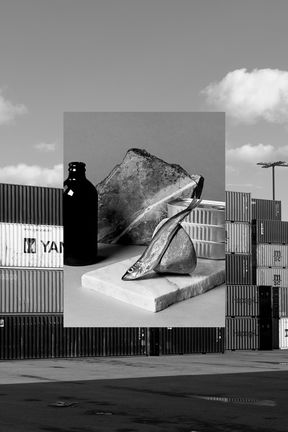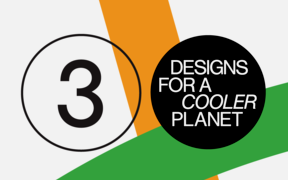The Baltic Ripple Effect

When
Where
Food from all around the globe travels over a silenced sea to nourish the needs of the happiest country in the world.
The Baltic Sea is not only one of the busiest shipping routes in the world but also one of the most vulnerable biospheres; a fragile ecosystem that is suffering from human impact.
Inside the anonymity of shipping containers and the plastic filled bellies of fish and seagulls lies the evidence of our individual impact on the Baltic Sea. But these brackish waters could also hold the solutions for a sustainable life where humans and other animals can thrive.
The fate of the sea will be inevitably connected to our food choices.
Human impact on the Baltic Sea is omnipresent. From noise pollution to microplastics, from eutrophication to oil spills. But our everyday choices can also reverse the damage we’ve created. The artists, designers and photographers of the POLARIS Project expose the threats to the fragile ecosystem of the Baltic Sea. The conservation of the sea starts with individual impact and awareness of the environment.
In revealing the links between food consumption and marine pollution through a mixed media installation the POLARIS group calls out to everyone who wants to preserve life below water and become an ally of the Baltic Sea.
Conscious consumption is the foundation of sustainable sociocultural change. By reducing traffic and turning to environmentally friendly food, the fragile ecosystem will thrive again. Only then the species at risk will have a chance to survive in their natural habitat.
Life in and around the Baltic Sea has always been entangled. With an increased understanding of human impact on the sea we can envision a future where all life can benefit from this connection.
The team:
- Terhi Adler, Dominik Fleischmann, Sabina Friman, Sirja Moberg, Eulalia Ramírez
- Guidance: Päivi Häikiö
Additional Contributors:
- Elina Cajan-Nikkinen, Johanna Karjalainen, Mark McGuinness
Contact:
- Sabina Friman, sabina.friman@aalto.fi
This artistic research project is a collaboration between Aalto University School of Art, Design and Architecture and IMAGE magazine. It is part of the POLARIS series by the Department of Visual Communication Design.
Hack our habitat
Aggressive urbanisation is straining our ecosystem. Rising construction volume causes massive demand for energy-intensive construction materials, and construction already accounts for 39 per cent of the global CO2 emissions.







